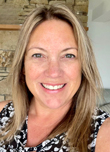From Big Pharma To Nonprofit: 3 Learnings In Building Biostatistics++ Teams
By Marla Curran, Bill & Melinda Gates Medical Research Institute

Biostatisticians — the statisticians of public health — are in high demand in the pharmaceutical industry. This boom reveals biostatisticians' unique position to grow in their careers and assume leadership roles. Leadership in the pharmaceutical industry is complex and dynamic, requiring a deep understanding of science, business, and people. It goes beyond managing a team or department; it involves applying strategic skills for scientific rigor and operational success, navigating the regulatory landscape, driving innovation, and ensuring successful products are delivered safely and effectively. At times, it involves leading a broader set of congruent functions or the “++ team,” i.e., data management, programming, bioinformatics, epidemiology, and medical writing.
Based on my experience of more than two decades building biostatistics++ teams for Big Pharma, small biotech, and nonprofit organizations, I offer the following advice for those interested in a path to business leadership and becoming a partner in drug development. I will also discuss some challenges, including the difficulty of pursuing nonstandard approaches.
Lesson 1: Be A Jack Of All Trades, Master Of Some
It is crucial to have a broad understanding of the various disciplines and functions involved in drug development to be an effective leader in the pharmaceutical industry. These include knowledge of clinical research, regulatory affairs, manufacturing, marketing, and more. However, it is only possible to be an expert in some areas. So instead, focus on developing deep expertise in a few required fields while broadening understanding of the drug development process. Statistics leaders uniquely situate themselves to gain a broad view that pairs nicely with technical depth due to the nature of statistics and its application to many disciplines.
Investigating various trial designs through simulation, learning coding techniques for statistical analysis, creating data visualizations and graphical displays, and developing expertise in specific statistical methods are all opportunities to become a "master of some" without venturing outside the field of statistics. Digging in on the ICH Guidelines provides lessons on the drug development disciplines that drive our day-to-day work. In fact, on my first day in the industry, my manager handed me the ICH Guidelines on Good Clinical Practice (E6) and Statistical Principles for Clinical Trials (E9) and said, "Review and understand these guidelines. We will get started in two weeks."
After only a few years as a principal statistician, I accepted a line management position that sparked a passion for people management, coaching, and organizational leadership. Take advantage of opportunities to deepen your knowledge in business disciplines through company-offered training and conferences, or pursue advanced degrees. In addition, you will realize countless benefits by simply stepping outside your comfort zone on challenging cross-functional initiatives or taking on stretch assignments.
Take advantage of learning opportunities by making lateral moves within an organization. You can gain significant mastery through hands-on experience in transferrable skills like project management, project leadership, communications, and other disciplines. Continue to assess the capabilities most critical to your organization's goals or where the company is placing significant investments. Identify areas where you have a natural aptitude or interest and pursue these roles for even short-term cross-training opportunities.
Gain statistical proficiency in a particular therapeutic area to be sought out by specialized biotech companies. I was the head of a statistics and programming team responsible for Antibacterial and Diseases of the Developing World portfolios in my line management position at GSK. This opportunity ignited a stronger sense of purpose and reconnected me with my early desire to work in global public health. It became a recurring theme to seek out companies specializing in infectious diseases. In my role at the Bill & Melinda Gates Medical Research Institute, we strive to eradicate the same conditions I developed therapies for early in my career, bringing my professional journey full circle.
Large pharmaceutical companies offer opportunities to build strong, foundational subject-matter expertise equivalent to graduate-level coursework in pharmaceutical development, which are of immeasurable value in terms of experience. Entering small biotech rewards a solid foundation and offers leadership roles with the opportunity to wear multiple hats and lead several functional areas. You can bring rigor and discipline to small "wild west" environments and creative thinking to conservative environments. By balancing the breadth and depth, you offer visionary leadership with high competency in the disciplines you lead.
Lesson 2: Cut The Buzzwords To Empower Innovation
The push for innovation in the industry came as development costs continued to rise while profits waned due to market access restrictions. As a result, development teams looked to statisticians for novel study designs and analyses to meet regulatory and payer evidence requirements in less time and for less cost. Specific methodologies such as Bayesian approaches and adaptive or seamless trials were termed innovative. However, many of these approaches have been buzzing around for a long time, with some having established regulatory guidance documents.
The tendency to overuse these buzzwords can create a false sense of novelty and progress and only provide a "veneer" of innovation. For instance, using Bayes' methods from 1763 and designing a Bayesian adaptive clinical trial with non-informative priors while following the FDA’s Guidance for Industry on Adaptive Designs should not be presented as “novel.” To effectively make transformational change, it's crucial to differentiate true innovation from mere hype.
Know when and why to abandon a traditional approach. Investigate alternatives thoroughly through simulations to assess risks and payoffs and effectively communicate why the standard is inappropriate to answer the scientific question of interest. Researchers and statisticians hold tight to the tried and tested statistical methods: frequentist p-values and type I error (a = 0.05). They know these targets establish success with regulatory agencies, i.e., statistical significance. It is up to the statistician to demystify the alternatives and demonstrate how the risks are less than perceived.
Ionan et al. 1 provide three recent examples of the use of Bayesian approaches to gain FDA approval for belimumab for pediatrics, a COVID-19 vaccine seamless trial, and bempedoic acid for subgroups. Rubert et al.2 discuss the value, barriers, and how to address the barriers for the successful application of Bayesian approaches. The latter article contains general lessons that transcend beyond Bayesian and provides a framework for statisticians to truly innovate and use transformational approaches effectively.
Stay current with advances in statistical computing, methods, modeling, and simulation. Encourage a culture of critical thinking and open communication of ideas. Generate genuine advances in the field by fostering collaboration between disciplines and industries; create an operating space where your team continues challenging the status quo. Foster an environment where failure is an acceptable learning tool. Above all, reserve the label "innovation" for when stakeholder pushback becomes a breakthrough.
Lesson 3: Align Your Purpose And Mission
Looking across the various settings — large pharmaceutical, small biotech, and nonprofit — I find comfort in the common themes but also celebrate the differences. What’s common are the rigor and discipline of working in a regulated environment, good clinical practice standards, scientific breakthroughs, matrix team operating models, and highly collaborative environments. However, the differences are equally exciting.
Large companies bring vast learning opportunities, access to world-class experts, tools, and techniques, and diverse perspectives. Small companies bring camaraderie, purpose, high accountability, and meaningful missions. Nonprofit organizations focus on critical social issues, develop treatments for diseases neglected by mainstream pharma, and improve access to healthcare. Working in the nonprofit sector has given me a sense of purpose and fulfillment while allowing me to apply my skills and expertise to meaningful work.
Not long after joining the Bill & Melinda Gates Medical Research Institute, a nonprofit organization addressing significant global health concerns for which the requisite development investment is often lacking, I organized and led a Statistical Advisory Board for our late-phase vaccine program. The opportunity to assemble, plan, and execute an ad board focused on statistical design and regulatory strategy in low- and middle-income countries was exciting and a first in my career.
One of the first steps in assembling a Statistical Advisory Board is to get non-disclosure agreements (NDAs) in place with each participating opinion leader and advisor. NDAs prevent sharing intellectual property with competitor companies targeting market advantage. When I asked about the NDA process at Gates MRI, a colleague remarked, "Not sure we need to worry about disclosure. It's unlikely to find another company willing to invest hundreds of millions in running a Phase 3 study with no return on their investment." This moment reaffirmed for me that I was part of a mission. Focus on the patient was no longer a company "mantra” but a reality.
Identify these intrinsic motivators with the help of a great coach and seek organizations aligning with those values and goals. Then, as you build out your team, share light bulb moments — like mine with the NDA process — and continue to weave in the inspiring mission that drives the day-to-day work. Nonprofit and Fortune 500 companies alike have meaningful pursuits within global public health and fighting the conditions affecting our families, friends, and ourselves.
Building and leading biostatistics teams across diverse settings taught me valuable lessons about effective leadership in the pharmaceutical industry. Biostatisticians can become key partners in drug development and influential business leaders by developing deep expertise in critical areas, providing clarity around true innovation, and pushing boundaries to achieve missions that inspire our teams. As we continue to advance public health and deliver meaningful benefits to the global patient community, let us never underestimate the significant role that statistical contributions play in achieving these goals.
References
- Alexei C. Ionan, Jennifer Clark, James Travis, Anup Amatya, John Scott, James P. Smith, Somesh Chattopadhyay, Mary Jo Salerno, Mark Rothmann, “Bayesian Methods in Human Drug and Biological Products Development in CDER and CBER,” Therap. Innov. Regul. Sci. 57, 436–444 (2023), https://link.springer.com/article/10.1007/s43441-022-00483-0.
- Stephen J. Ruberg, Francois Beckers, Rob Hemmings, Peter Honig, Telba Irony, Lisa LaVange, Grazyna Lieberman, James Mayne, Richard Moscicki, “Application of Bayesian approaches in drug development: starting a virtuous cycle,” Nat. Rev. Drug Discov. 22, 235–250 (2023), https://www.nature.com/articles/s41573-023-00638-0.
About The Author:
 Marla Curran, DrPH, is the head of biostatistics and data science at the Bill & Melinda Gates Medical Research Institute. With more than 20 years in statistical leadership roles in drug development and medical affairs across multiple therapeutic areas, her primary focus is on infectious diseases. She and her team design and execute statistical and data science strategies to support product development programs, clinical trials, and interactions with global health authorities. Curran earned her Doctor of Public Health and M.S. in biostatistics, with an emphasis in epidemiology, from UNC-Chapel Hill, and a B.S. in statistics from NC State University.
Marla Curran, DrPH, is the head of biostatistics and data science at the Bill & Melinda Gates Medical Research Institute. With more than 20 years in statistical leadership roles in drug development and medical affairs across multiple therapeutic areas, her primary focus is on infectious diseases. She and her team design and execute statistical and data science strategies to support product development programs, clinical trials, and interactions with global health authorities. Curran earned her Doctor of Public Health and M.S. in biostatistics, with an emphasis in epidemiology, from UNC-Chapel Hill, and a B.S. in statistics from NC State University.
